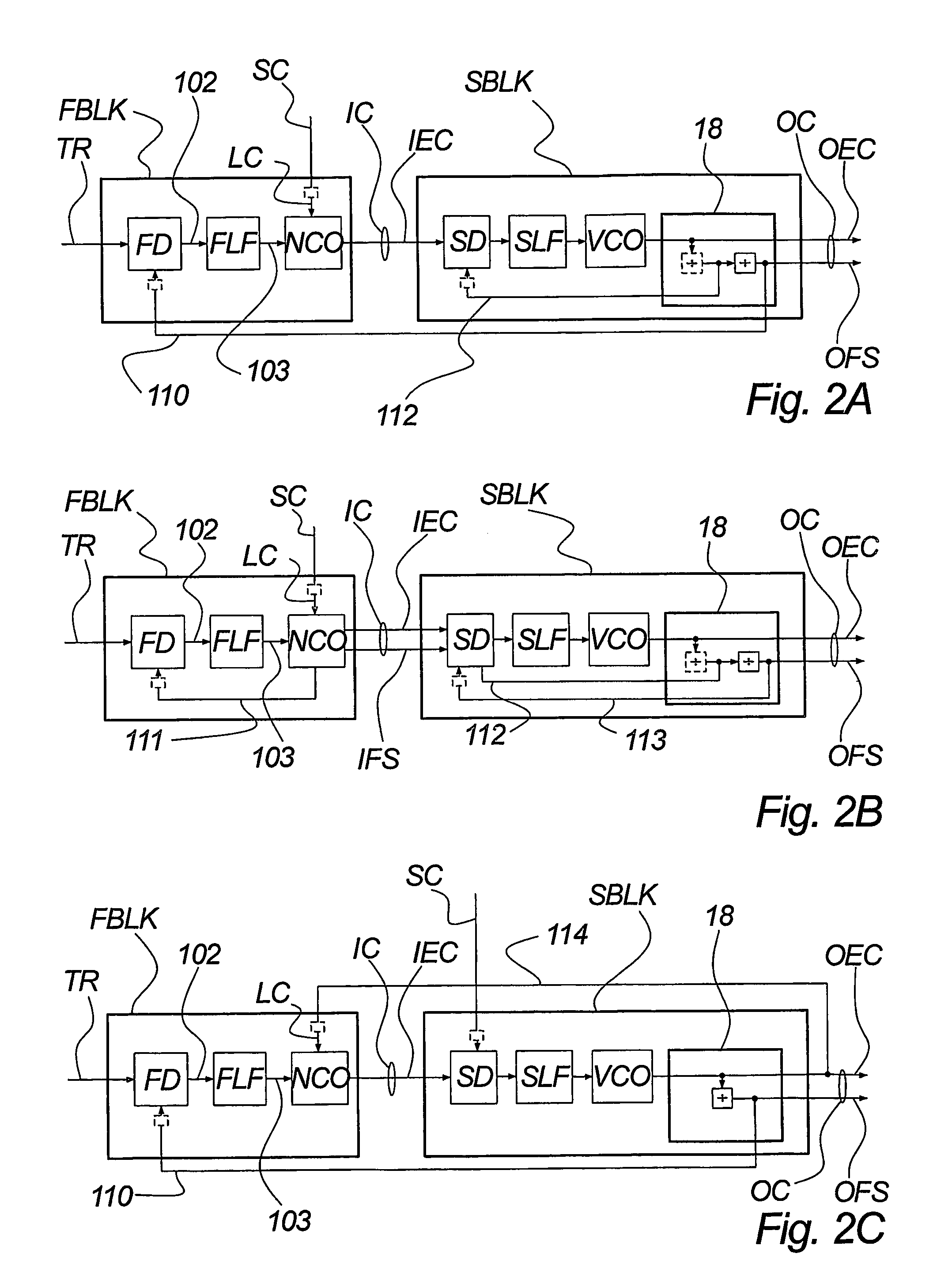Method of establishing an oscillator clock signal
a technology of oscillator clock and signal, which is applied in the field of establishment of clocks and carriers, can solve the problems of inability to implement on chips, relatively expensive, and only over a narrow frequency range of vcxos, and achieve the effect of efficient and correct selection of signal components
- Summary
- Abstract
- Description
- Claims
- Application Information
AI Technical Summary
Benefits of technology
Problems solved by technology
Method used
Image
Examples
embodiment
PREFERRED EMBODIMENT
[0375]FIG. 19B shows a preferred embodiment of the Combined Detector of the present invention. As with FIG. 19A described above, and for the same reasons, this embodiment is not shown in the context of the second block of the cascade form of the Hybrid Synchronizer of the present invention.
[0376]This preferred embodiment comprises a reference synchronous state machine RSSM which is clocked by a reference event clock, being a first component IS1A of a first input signal IS1. It further comprises a feedback synchronous state machine FSSM which is clocked by a feedback event clock, being a first component IS2A of a second input signal IS2. It further comprises a combinatorial block CMB and a frame offset counter FOC. The reference state machine RSSM outputs a reference event count REC to the combinatorial block CMB, and this signal is also copied to the feedback state machine FSSM. Similarly, the feedback state machine outputs a feedback event count FEC to the combi...
PUM
 Login to View More
Login to View More Abstract
Description
Claims
Application Information
 Login to View More
Login to View More - R&D
- Intellectual Property
- Life Sciences
- Materials
- Tech Scout
- Unparalleled Data Quality
- Higher Quality Content
- 60% Fewer Hallucinations
Browse by: Latest US Patents, China's latest patents, Technical Efficacy Thesaurus, Application Domain, Technology Topic, Popular Technical Reports.
© 2025 PatSnap. All rights reserved.Legal|Privacy policy|Modern Slavery Act Transparency Statement|Sitemap|About US| Contact US: help@patsnap.com



